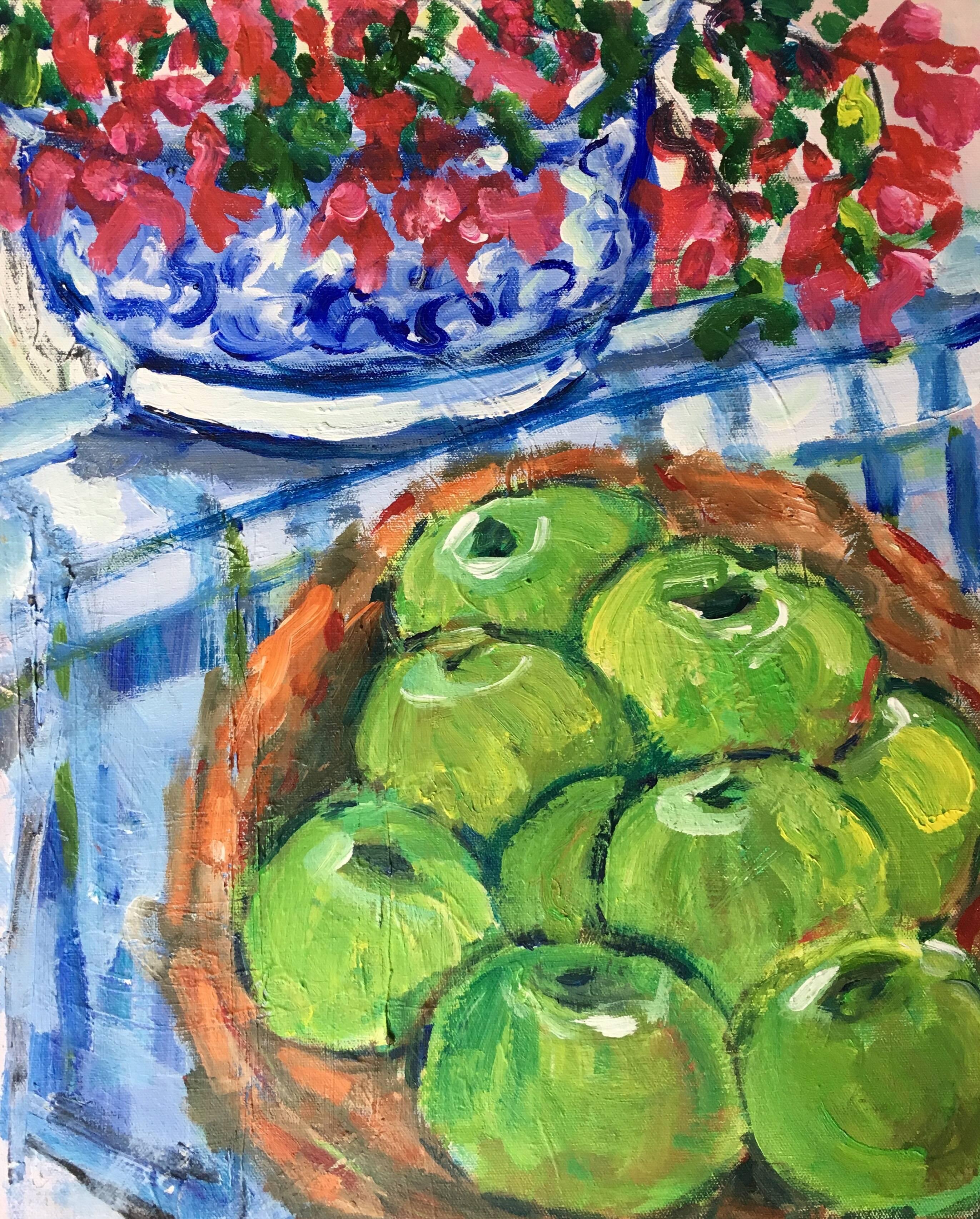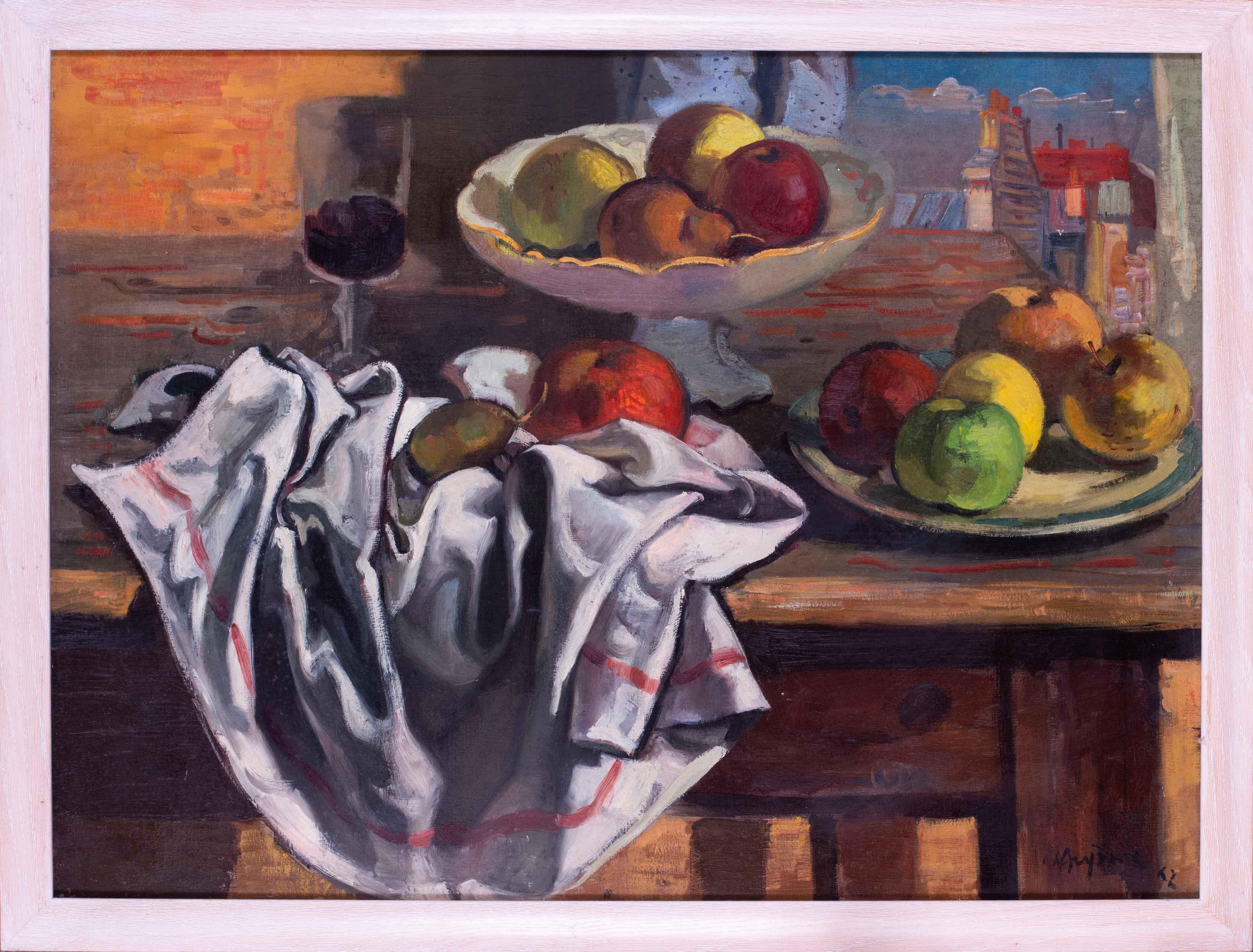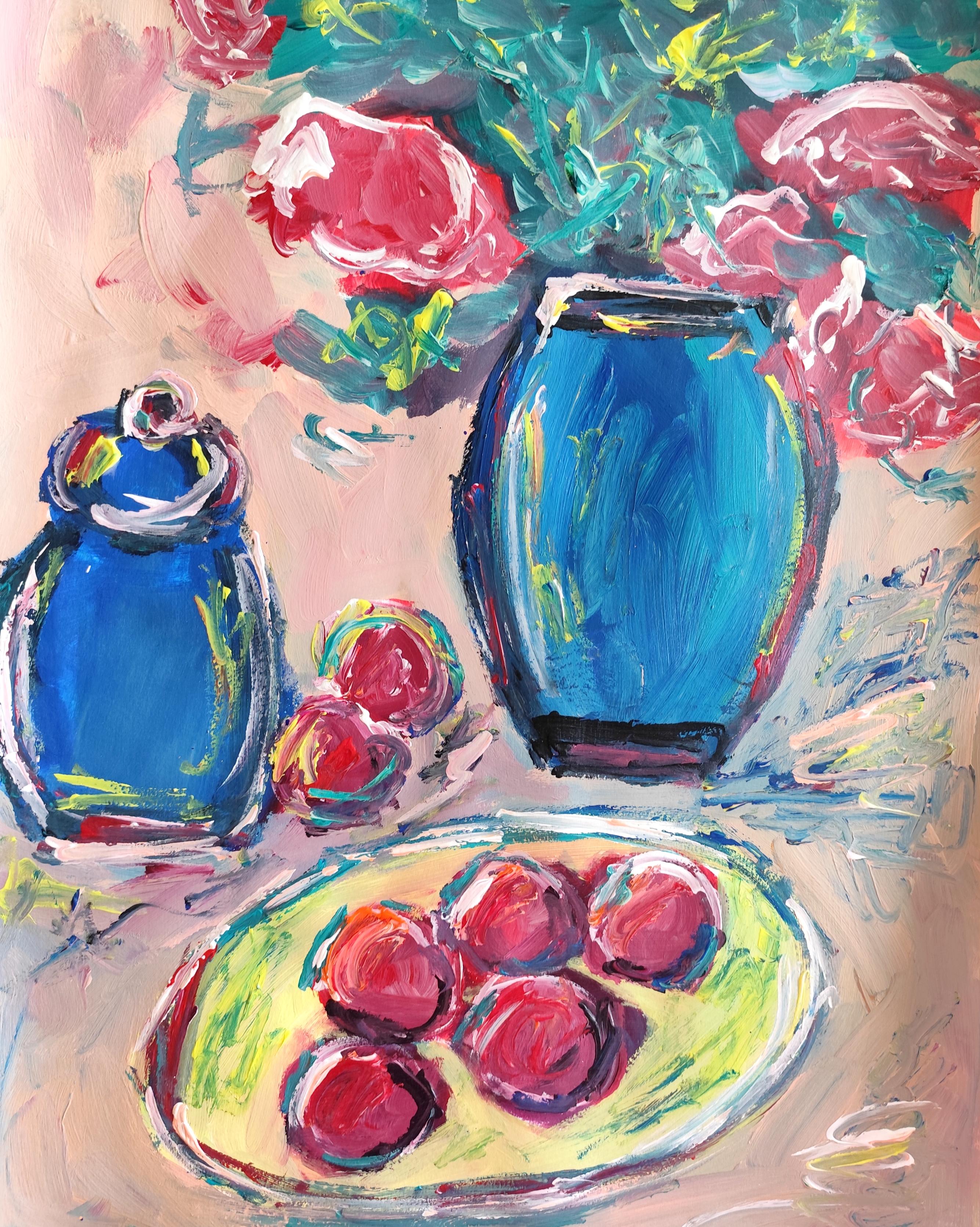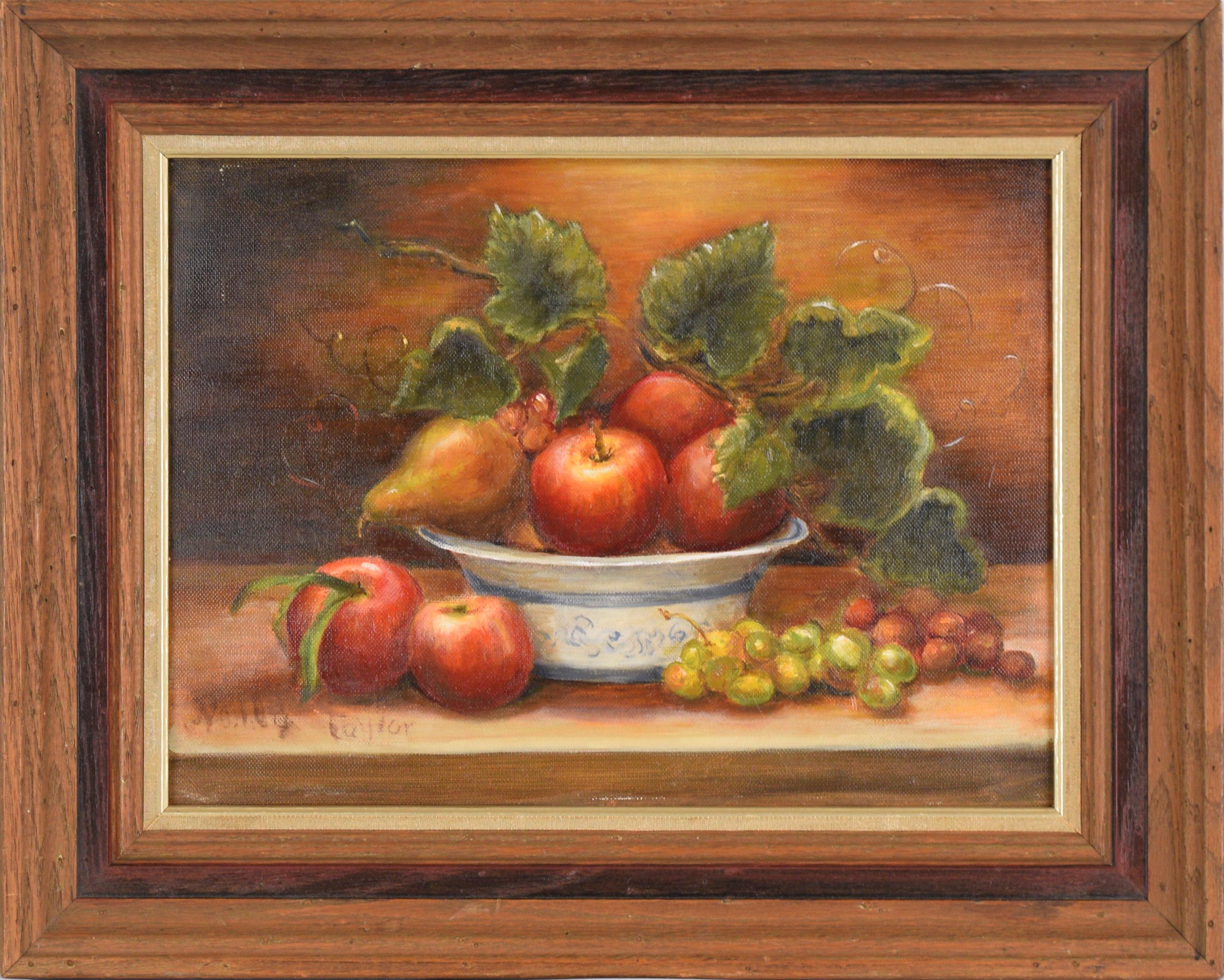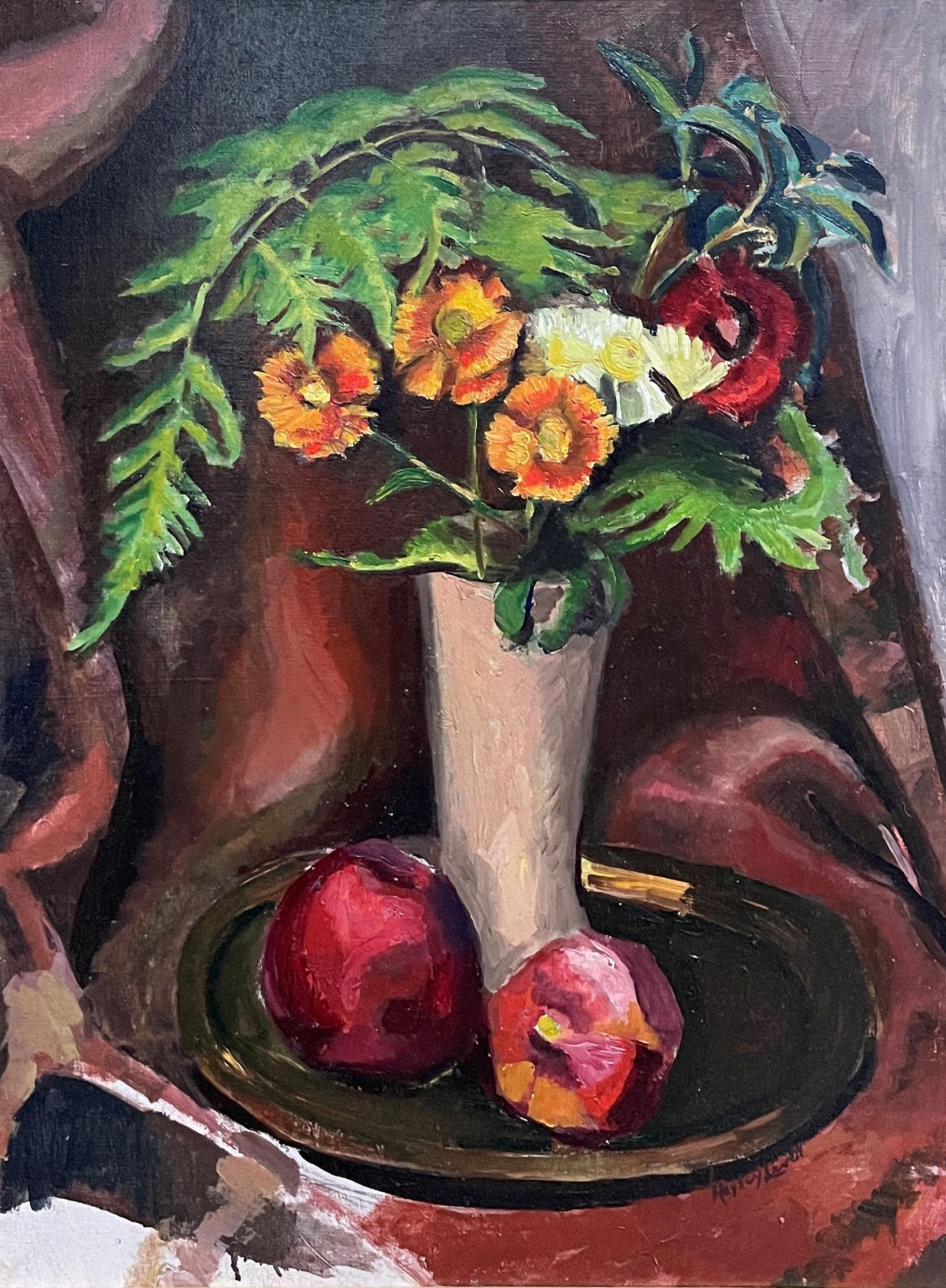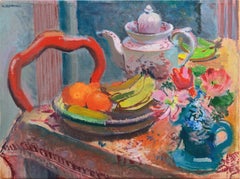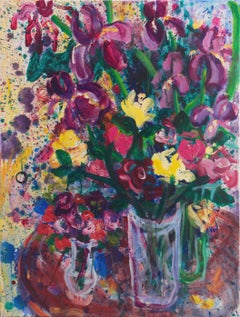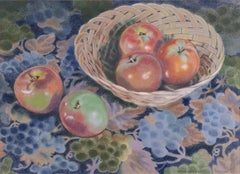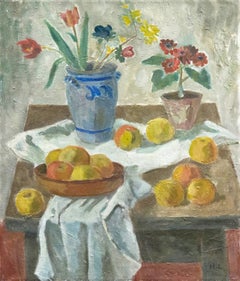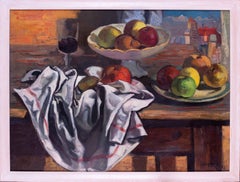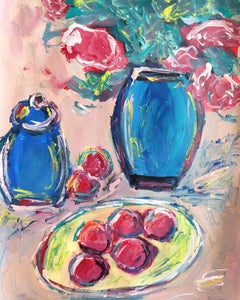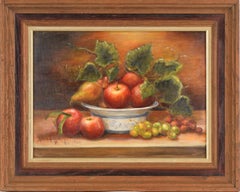Items Similar to 'Apples and Cherry Blossoms', Modernist Still Life
Want more images or videos?
Request additional images or videos from the seller
1 of 11
Sally Mack'Apples and Cherry Blossoms', Modernist Still LifeCirca 1975
Circa 1975
$1,450
£1,101.31
€1,272.38
CA$2,032.23
A$2,274.44
CHF 1,187.09
MX$27,736.50
NOK 15,193.08
SEK 14,382.19
DKK 9,495.59
Shipping
Retrieving quote...The 1stDibs Promise:
Authenticity Guarantee,
Money-Back Guarantee,
24-Hour Cancellation
About the Item
Signed lower right "Sally Mack" (American, 20th century) and painted circa 1975. Painted on Arches paper.
A vibrant, Post-Impressionist still-life showing branches of cherry-blossoms loosely arranged in a Chinese blanc-de-chine porcelain vase.
- Creator:Sally Mack (American)
- Creation Year:Circa 1975
- Dimensions:Height: 18 in (45.72 cm)Width: 12 in (30.48 cm)Depth: 0.01 in (0.26 mm)
- Medium:
- Movement & Style:
- Period:
- Condition:unframed. shows well.
- Gallery Location:Santa Cruz, CA
- Reference Number:1stDibs: LU3441009183
About the Seller
5.0
Platinum Seller
Premium sellers with a 4.7+ rating and 24-hour response times
Established in 1982
1stDibs seller since 2013
740 sales on 1stDibs
Typical response time: 1 hour
- ShippingRetrieving quote...Shipping from: Santa Cruz, CA
- Return Policy
Authenticity Guarantee
In the unlikely event there’s an issue with an item’s authenticity, contact us within 1 year for a full refund. DetailsMoney-Back Guarantee
If your item is not as described, is damaged in transit, or does not arrive, contact us within 7 days for a full refund. Details24-Hour Cancellation
You have a 24-hour grace period in which to reconsider your purchase, with no questions asked.Vetted Professional Sellers
Our world-class sellers must adhere to strict standards for service and quality, maintaining the integrity of our listings.Price-Match Guarantee
If you find that a seller listed the same item for a lower price elsewhere, we’ll match it.Trusted Global Delivery
Our best-in-class carrier network provides specialized shipping options worldwide, including custom delivery.More From This Seller
View All'Still Life, Fruit & Flowers', Paris, Copenhagen Royal Academy of Art
By Victor Isbrand
Located in Santa Cruz, CA
Signed upper left, 'V. Isbrand' for Victor Isbrand (Danish, 1897-1989) and painted circa 1945.
A vibrant Post-Impressionist still-life showing a view of a farmhouse interior with a...
Category
1940s Post-Impressionist Still-life Paintings
Materials
Canvas, Oil
'Spring Still Life', Large American Post Impressionist, California Art League
Located in Santa Cruz, CA
Signed lower right, 'Rochelle' for Rochelle Tietze (American, born 1952); additionally signed, verso, 'Rochelle Tietze', dated '1994' and titled, 'Spring Bouquet II'.
A large and vi...
Category
1990s Post-Impressionist Still-life Paintings
Materials
Canvas, Acrylic
'Basket of Apples', California League of Woman Artists, Sacramento, Boise Museum
Located in Santa Cruz, CA
Signed lower right, 'Maria Winkler' (American, born 1946) and dated 1991.
Professor Emeritus of the Art Department at California State University, Sacramento, Maria Winkler earned h...
Category
1990s American Realist Still-life Drawings and Watercolors
Materials
Pastel, Laid Paper
'Flowers and Golden Apples', National Art Museum Denmark, Charlottenborg, Paris
By Harald Leth
Located in Santa Cruz, CA
Signed lower right with initials 'H.L.' for Harald Leth (Danish, 1899-1986) and painted circa 1935.
Leth commenced his art studies with Johannes Larsen (1921) before attending Harald Giersing...
Category
1930s Modern Still-life Paintings
Materials
Canvas, Oil
'Still Life of Flowers', San Francisco Bay Area Modernist, NY MoMA, LACMA, AIC
By Tom Lewis
Located in Santa Cruz, CA
Signed lower right, 'Tom E. Lewis' (American, 1909-1979) and created circa 1935. Accompanied by old backing with label.
A period Modernist still-life of flowers informally arranged...
Category
1930s Expressionist Still-life Prints
Materials
Monoprint, Paper
'Still Life of Fruit', Denver Art Museum, WPA, Santa Barbara Museum, Who Was Who
Located in Santa Cruz, CA
Signed, faintly, lower left, 'Donald Bear' (American, 1905-1952) and painted circa 1945.
A dynamic, modernist still-life of fruit in gouache, watercolor, crayon and india-ink.
Donald Jeffries Bear was born in Terre Haute, Indiana, and grew up in Denver. He first attended Denver's Art Academy and, later in life, became director of the Denver Art Museum (1930-35). During the 1930s, he was also regional advisor for the Federal Art Project and was a primary art...
Category
1940s Modern Still-life Drawings and Watercolors
Materials
Chalk, Crayon, Ink
You May Also Like
Impressionist Still Life Apples and Flowers, Oil Painting
By Pamela Cawley
Located in Cirencester, Gloucestershire
Impressionist Still Life Apples and Flowers, Oil Painting
by Pamela Cawley, British 20th century
oil painting on canvas, unframed
board: 20 x 16 inches
Stunning original Impression...
Category
21st Century and Contemporary Impressionist Landscape Paintings
Materials
Oil
20th Century French Post Impressionist still life with apples by Aujame
Located in Petworth, West Sussex
Jean Claude Aujame (French, 1905 – 1965)
Nature Morte aux pommes
Signed and dated ‘Aujame 62’ (lower right)
Oil on canvas
23.1/2 x 32 in. (60 x 81.3 cm.)
Category
20th Century Post-Impressionist Still-life Paintings
Materials
Canvas, Oil
Expressionist impressionist still-life painting on paper "Apples and roses"
Located in VÉNISSIEUX, FR
French contemporary artist Natalya Mougenot invites us into her world of expressive simplicity in "Apples and Roses".
In this radiant acrylic painting, a vase filled with red bloomi...
Category
2010s Abstract Impressionist Still-life Paintings
Materials
Paper, Acrylic
"Apples, Grapes, and Pears" Still Life
Located in Soquel, CA
Idyllic still life with fruit by American artist Nancy Taylor (20th century). A lush grave vine is perched atop a bowl of apples and pears. Two more apple...
Category
Late 20th Century American Impressionist Still-life Paintings
Materials
Canvas, Oil, Cardboard
$260 Sale Price
20% Off
Fruit Still Life, Modern Oil Painting by Female Artist Miriam Bromberg
By Miriam Bromberg
Located in Long Island City, NY
Fruit Still Life
Miriam Bromberg
Date: circa 1970
Oil on Canvas
Size: 16 x 12 in. (40.64 x 30.48 cm)
Category
1970s Contemporary Portrait Paintings
Materials
Canvas, Oil
"Floral Still Life with Two Apples" Hayley Lever, Modernist Still Life Painting
By Hayley Lever
Located in New York, NY
Hayley Lever
Floral Still Life with Two Apples
Signed lower right
Oil on canvas
20 x 16 inches
Hayley Lever’s versatility has worked against his posthumous reputation. He was never...
Category
Early 20th Century Modern Still-life Paintings
Materials
Canvas, Oil
More Ways To Browse
Cherry Blossom
Apple Still Life
Apple Impressionist
Still Life Cherries
Cherry Porcelain
Chinese Vase Still Life Art
Still Life Chinese Porcelain
Chinese Cherry Blossom Porcelain Vase
Vintage Apple Blossom
Flower And Bird Painting
Painting Of Pots
Flower Paintings Framed Large
Oil Canvas Fruit Painting
Orange Flower Painting
Art Painting Flowers Purple
Framed Shell Art
White Painting Black Flowers
Fruit Still Life Paintings
